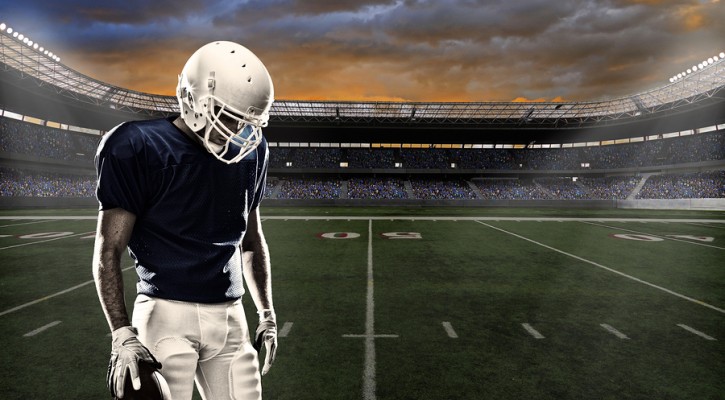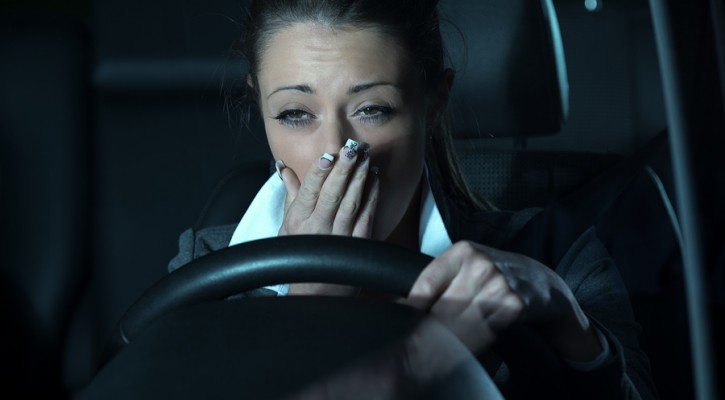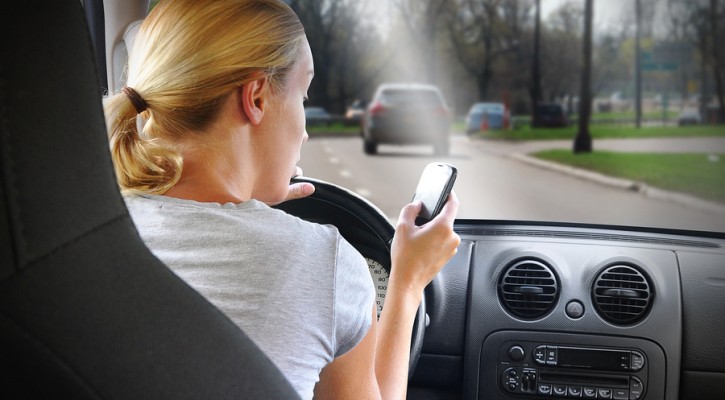Category Archive: Distracted Driving
Chimps Do It, Why Can’t We?
April 21, 2015
An interesting study of wild chimps in Uganda’s Kibale National Park shows that chimps are extremely cautious when crossing busy roads. The 29 month study observed the chimps’ behavior when crossing busy highways and little traveled roads.
When crossing roads that were rarely traveled, the chimps used little care and crossed in large groups. However, when crossing a busy roadway with cars traveling 45 to 60 mph, the chimps used great care, they looked both ways and, once they were sure the roadway was clear, they crossed quickly in small groups. Fifty-seven percent of the chimps ran across the roadway. As shown in the video above, the older, stronger chimps would wait and make sure younger or weaker chimps crossed safely.
The researchers hope to use the data they gathered to improve roadway safety for the chimps in the park. Road building is on the rise in Africa and African wildlife will be subjected to more and more roadway hazards.
It would almost seem that the same data from the chimp study could be applied to humans but the chimps seem to show much greater care when crossing a highway than humans do. For one thing, chimps will never be seen talking on a cell phone the way sixty percent of pedestrians in the US do when they are crossing roads; nor will you find them with earbuds in their ears listening to an iPod. The chimps will never make eye contact with a driver and expect him to stop in time.
Distracted walking figures are hard to come by but safety experts feel that emergency room figures don’t tell the whole story when it comes to distracted pedestrian injuries. The Consumer Product Safety Commission says that, if distracted walking figures are similar to distracted driving figures, there may have been approximately two million pedestrian injuries related to cell phone use in 2010.
Not all of those two million injuries involved pedestrians on roadways but the roadway problem is severe. In 2013, there were 4,735 pedestrians killed and an estimated 66,000 injured in traffic crashes in the United States. Pedestrian deaths have made up fourteen percent of the total number of highway deaths for each of the past three years.
Between distracted drivers and distracted pedestrians, it seems that the people who gather and total up crash data are the only ones paying attention to what happens on the road. Everyone needs to start paying more attention to the road; the way chimps do.

If The Home Team Loses, You May Lose Too
January 30, 2015
When the home team loses, auto collision rates increase around NFL stadiums. This finding is the result of a study by the Highway Loss Data Institute. The Institute looked at insurance collision claims in zip codes for 31 NFL stadiums and zip codes nearby.
The researchers found that claims went up on days when home games were played. This may make sense due to the large amount of traffic around an NFL stadium on game days but reasons behind these crash claims go deeper than that.
Not only did claims go up on game days, there were big differences based on whether the home team won or lost. When the home team won, the crash rate increased by 3.2 percent compared to days when the team was out of town. When the home team lost, the crash rate was 9.4 percent higher.
What would explain the higher crash rate when the home team loses? Driving safety experts have long known that driver emotions are the driving force behind car crashes. No matter the emotion, any emotion, whether good or bad, that can take your mind off the road can lead to a crash.
Drivers, who may be elated by a win and in a celebratory mood, may not be devoting their full concentration to the road ahead. Drivers who are upset or angry by the loss may also be giving less attention than needed to the road ahead but their anger can also make them impatient with other drivers. Their anger and frustration may also lead them to take chances they might not otherwise take.
With the Super Bowl approaching, no matter where they live, fans all over the nation will be attending Super Bowl parties, either at private homes or sports bars. Even though the teams involved may not be the home team, ardent football fans will root for one team or another and passions will be high. Alcohol, which is a depressant, may be involved, adding to the anger and frustration for fans of the losing team.
Drivers need to be aware of these emotions and the effect they may have on their driving. If you bet on a team and lose, your anger will most likely be even greater. Spouses or partners of rabid football fans may want to take over the driving duties after the game regardless of who wins or loses.
If alcohol is involved in your Super Bowl plans, make sure you have a plan for getting home either with a designated driver or by calling a cab.
One team has to lose and that means, unless fans can put the game behind them and concentrate on the road, other drivers who aren’t invested in the game will be in danger too.
Read more: Home team loss boosts collision claim rates around NFL stadiums

AAA Studies Drowsy Driving
December 3, 2014
More than one-fifth of fatal motor vehicle crashes involved drowsy drivers according to a new study by the American Automobile Association. The study looked at data from a representative sample of 14,268 crashes between 2009 and 2013 and determined that an average of 6,400 people are killed in 328,000 drowsy driving crashes per year.
Among their findings, the study determined that drowsy driving caused:
- 6% of all crashes in which a vehicle was towed from the scene;
- 7% of crashes in which a person received treatment for injuries sustained in the crash;
- 13% of crashes in which a person was hospitalized and;
- 21% of crashes in which a person was killed.
Sleep deprived nation
America is a sleep deprived nation. According to the National Sleep Foundation, 60% of Americans have driven while feeling sleepy and 37% admit to actually having fallen asleep at the wheel in the past year.
A recent National Geographic TV special explained that sleep serves a necessary biological function and serves to clear toxic chemicals from the brain. One toxic substance that is known to be cleared out during sleep is associated with Alzheimer’s disease and it’s thought that not getting enough sleep could lead to the development of Alzheimer’s disease.
According to National Geographic, having a sleep deficit is like having an overdraft at the bank. If you sleep only six hours a night on weeknights and try to make it up by sleeping two extra hours on Saturday, you still have a sleep deficit of eight hours remaining. That has to be paid back somehow and, unfortunately, it’s often paid back behind the wheel.
Getting a full night’s sleep is critical, not only for safe driving but also for our overall health. For tips on getting a full night’s sleep, visit: Sleep tools and tips

Are You Addicted To Your Smartphone?
December 3, 2014
Addictions take many forms and it’s becoming apparent that more and more Americans are addicted to their smartphones or other digital devices.
Addictions can be somewhat harmless or they can take over and ruin your life and the lives of others that you love and care about. Not only can addictions ruin your life, they can be life threatening. In the case of smartphones and other digital devices, the constant urge to always stay connected can take over one’s life and, if done while driving, can easily lead to a fatal crash.
The Center for Internet and Technology Addiction has created a test to determine whether or not you could be addicted to your digital devices and may need help in curbing your need to stay connected. To take the test, visit: Digital Distraction Test

Drivers Abandon One Dangerous Habit For One More Dangerous
November 19, 2014
Drivers are using cell phones less but the even more dangerous habit of texting while driving hasn’t changed according to a new study by State Farm Insurance. State Farm has conducted a phone survey of drivers aged 18 and over every year for the past six years and the trends are both encouraging and disturbing at the same time. According to the survey:
- There has been a steady reduction in the number of drivers talking on a hand-held cell phone.
- The number of people who report texting while driving has remained stable over six years.
According to State Farm, the growth of Smartphones has created new distractions with “a significant increase over six years in drivers using their phones for: accessing the Internet, reading email, responding to email, programming and listening to a navigation system and reading social media.”
Another disturbing finding is that ten percent of drivers report that driving in school and construction zones has no impact on their cell phone use.
More drivers report that they are using hands-free devices but a recent study by AAA shows that hands free devices can be even more distracting because the effort required in getting the voice recognition system to recognize commands can frustrate drivers and distract their attention from the road.
Even though most drivers report that they are more likely to talk on a cell phone rather than text, drivers still don’t seem to be getting the word that cell phone use is still distracting because paying attention to a cell phone conversation requires concentration and brain power that should be devoted to the road ahead.
For more information, read: DRIVERS ADMIT TO USING THEIR PHONE WHEN BEHIND THE WHEEL – HERE’S WHEN
